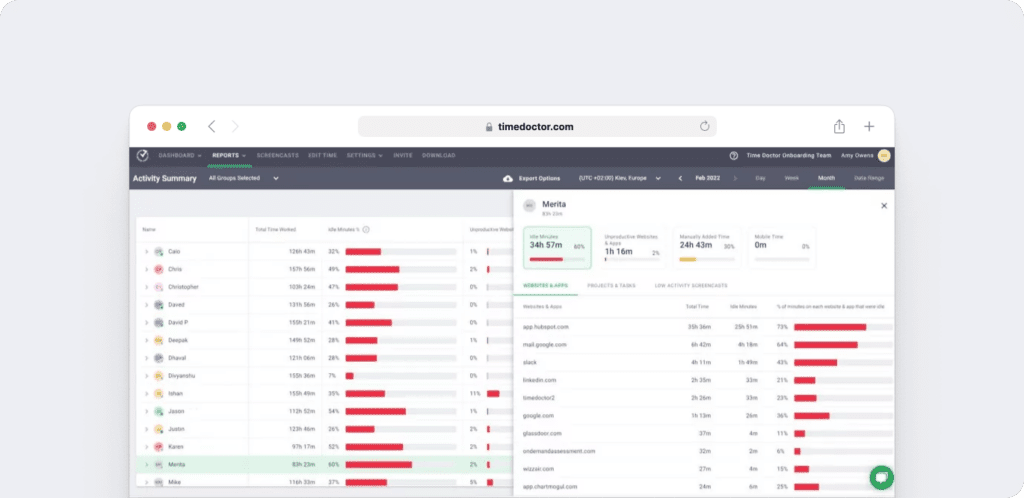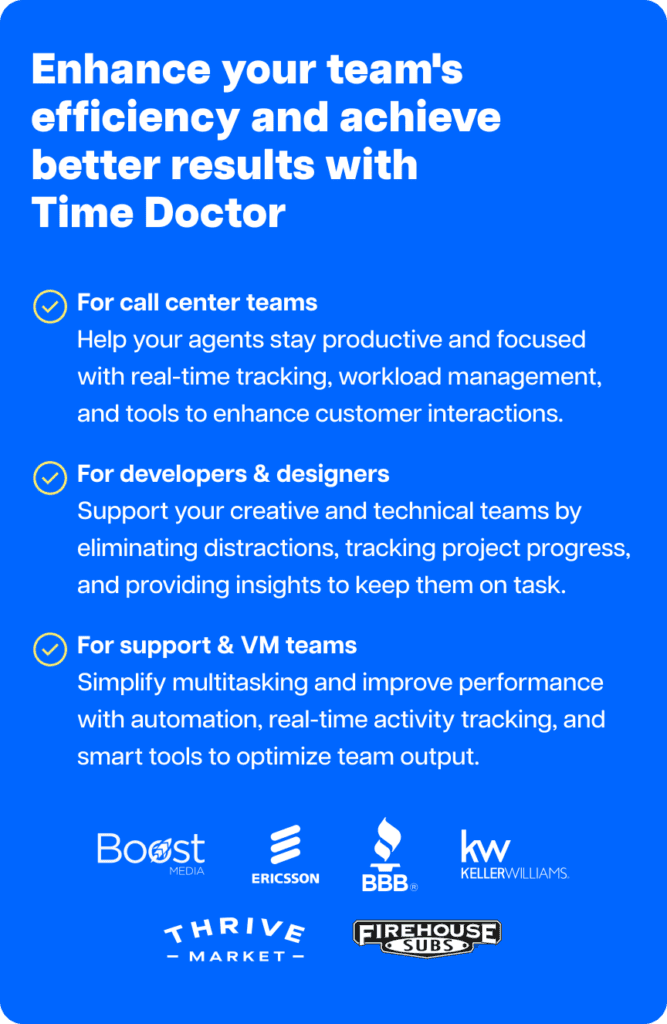An agile work environment is a non-traditional workspace that allows flexible work styles and locations. While traditional offices assign employees to desks, an agile office lets teams move around the workspace to collaborate and work more efficiently.
How could this type of workspace benefit your hybrid team? This guide covers everything you need to know about setting up an agile environment, including benefits, drawbacks, and a framework for success.
Why are agile workplaces becoming more popular?
As the world of work evolves, so do workspace and infrastructure trends. Agile workplaces have become increasingly common for several reasons:
- Collaboration: Employees who brainstorm together and pool their resources can often do more in less time. Collaboration in agile environments is often much easier, as the spaces are more flexible and don’t require working in fixed locations.
- Autonomy: Whether employees work together on projects or complete tasks independently, they can benefit from autonomy. With an agile office design, teams and individuals can decide where to work and optimize spaces as necessary.
- Adaptability: Even the most carefully planned projects often need last-minute changes. Agile teams can seamlessly adapt to urgent requests and new priorities, as they can move to other workspaces or opt to work in the office at any moment.
- Structure: As hybrid teams become more popular, the benefits of adopting an agile work environment become even more significant. When employees work in the office only a few days a week, an agile approach can maximize available space while keeping costs in check.
Common spaces for agile work environments
Wondering what an agile office design looks like? Think of a collaborative space that prioritizes flexibility in the work environment. Here are a few options to consider including in your office design:
- Open-plan spaces: Often located at the center of the office, open-plan spaces work well for collaborative projects. Larger groups can use the couches as flexible meeting rooms for brainstorming and strategy sessions, while individuals can use desks and tables for working solo or in small groups.
- Quiet zones: Best for employees who want to work independently, quiet zones offer the opposite of open-plan areas. Quiet spaces allow employees to work independently without distractions from group meetings or collaborative projects. These spaces often include booths with doors for added privacy.
- Breakout spaces: While open-plan areas are best for meetings and projects, breakout spaces are better for casual chats. Think of a break room in a traditional office space. Breakout meeting spaces are often designed for employees to talk over coffee or lunch and may also feature games and activities.
- Resource areas: From printers and scanners to coffee machines and office supplies, resource spaces have everything your team needs to do their jobs efficiently. Resource areas often work best near open-plan areas or team meeting spaces, where employees can access supplies quickly.
- Touchdown spaces: Also known as overflow areas, touchdown spaces let employees settle in to work for shorter periods. These spaces often include hot desks, which employees can book in advance or in the moment. With overflow areas, hybrid work teams can create a focus space at a moment’s notice.
The benefits of an agile work environment
If your current office space has a more traditional setup, you may wonder if it’s worth making the switch. If these benefits of flexible workspaces align with your business goals, an agile space could be a smart investment:
- More opportunity for collaboration: Traditional offices and cubicles tend to silo employees and prevent teamwork. In contrast, opportunities for brainstorming and team collaboration can promote creativity in agile environments and improve engagement amongst your team.
- Dedicated areas for focus: Even in open offices or cubicle setups, distractions and noise can prevent employees from doing their best work. Agile spaces allow employees to eliminate distractions so they can focus when necessary.
- Extra opportunities for face-to-face work: When teams work in the office only part-time, they have to make the most of meeting time. From open-plan spaces to breakout spaces, agile offices make it easy for employees to work face-to-face and get real-time feedback.
- Increased productivity: Employees with more control over their workspaces can work more efficiently. Due to the adaptability in agile work environments, teams can complete more projects before the deadline.
- Improved customer satisfaction: Focusing on how an agile methodology could boost employee satisfaction is natural. However, happier teams and more productive employees often equal more satisfied customers—which can significantly impact your bottom line.
The drawbacks of agile workplaces
Agile spaces offer many benefits but aren’t the right option for every business. Make sure you know the challenges of implementing an agile work environment before making large-scale changes:
- Poor communication: If your team is accustomed to working in static spaces like offices or cubicles, transitioning to a more flexible working structure can create confusion.
To help teams communicate better, ensure everyone understands their roles and responsibilities. Use an approach like office hoteling, which requires employees to book workstations for the day.
- Lack of structure and direction: Activity-based working formats allow for maximum flexibility and space utilization, but the lack of structure can compromise performance for some employees. To provide direction, consider using a hot desk format, which lets employees book desks and plan their days in advance.
- Faster pace and higher burnout potential: Although an agile approach can certainly be positive for many team members, it doesn’t create a positive employee experience for everyone. Team leaders and project managers need to monitor engagement and watch for burnout.
- Resistance to change: Some employees and managers will inevitably resist changing from a traditional setup to an agile space. Make time to speak with these team members to understand why they hesitate to change. You may be able to offer accommodations that create a functional space for everyone.
- Management difficulties: Monitoring team members in a more dynamic space can become difficult for managers. Ensure your management team has the tools to oversee employees and track progress effectively.
6 tips for adopting an agile work environment
Need a framework for transforming your company’s work environment? Use these tips to make the switch go as smoothly as possible.
1. Get leadership buy-in and support
The first step toward a successful switch is securing support from your executive team. Work closely with leadership to ensure you have the budget and support you need for team collaboration and redefined work schedules.
2. Provide adequate training and education
Whether your organization is new to the hybrid work model or the agile methodology, offer training to get teams up to speed. For example, employees may need training on key components like the scrum framework and Kanban boards.
3. Encourage collaboration across teams and departments
Adopting an agile methodology and team structure won’t succeed if employees continue to work in silos. In addition to creating physical spaces for teamwork, make changes to team structures to encourage collaboration.
For example, you might encourage product owners and project managers to plan sprints together. You can allow them to host brainstorming sessions in open-plan spaces or book groups of desks for key team members.
4. Understand that this will be an iterative approach
Going from a traditional office setup to an agile workspace can be a tremendous change. Instead of making one major adjustment to your office design and team structure, plan multiple smaller iterations.
For example, introduce open-plan spaces and quiet zones first to help employees get accustomed to new options. Then you might require hot desking before allowing more flexible activity-based working.
5. Support work-life balance
One of the best benefits of agile work is the flexibility it brings. Yet increased flexibility means more options, which can overwhelm some employees.
To avoid productivity issues or burnout, put guardrails in place to support a work-life balance. You can keep employees happy and productive with a mix of check-ins and automated tools.
6. Provide the right tools and infrastructure
Make it easy for teams to hit the ground running by equipping them with tools for agile work. With a project management and collaborative software platform like Time Doctor, you can monitor schedules, projects, hours, and payroll in a single app.
Time Doctor supports employee scheduling to ensure team members report on time, whether or not they’re in the office. The app can also track time and activity for each employee so you can monitor attendance and see which projects take the most time.

The time tracking app also provides automated insights that help you understand which employees and teams are most productive—so other teams can model their approach. It even offers work-life balance alerts, so you know who’s at risk and can address burnout before it’s too late.

Ready to take the first step toward creating an agile work environment? Start your free trial of Time Doctor and make your team more flexible, no matter where they work.

Andy is a technology & marketing leader who has delivered award-winning and world-first experiences.


